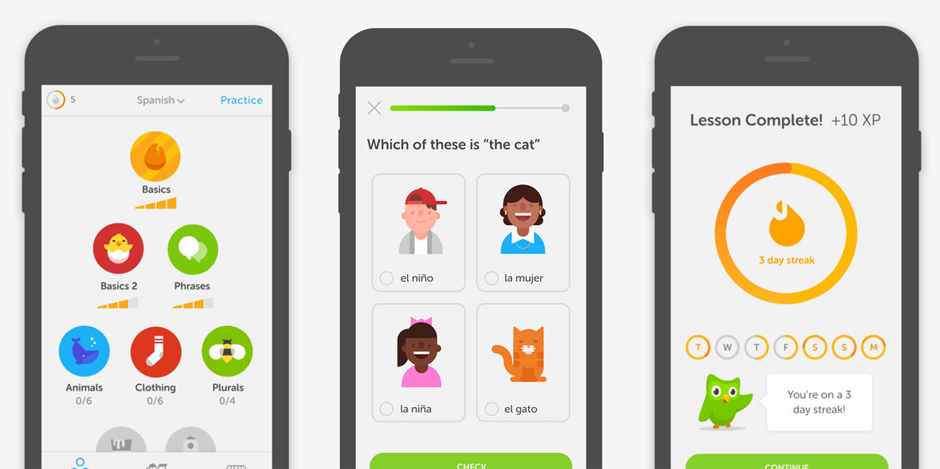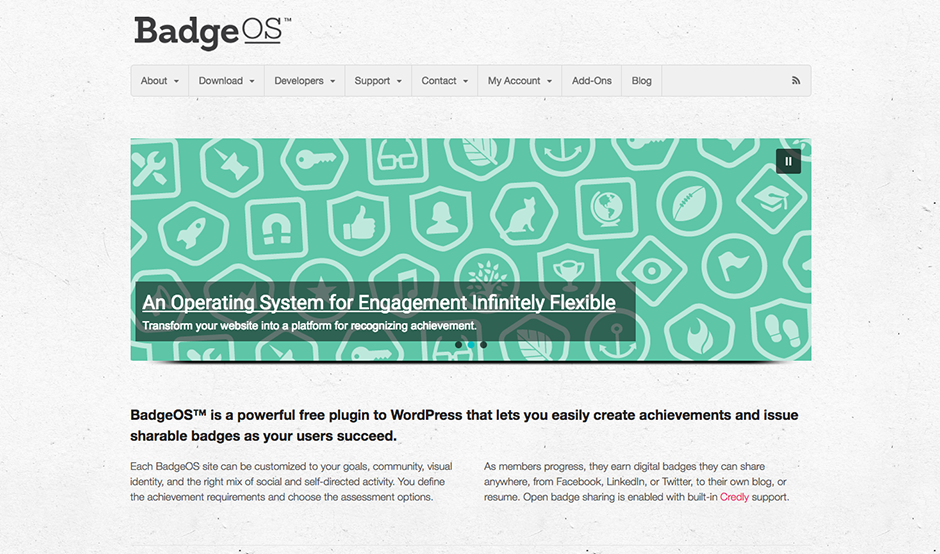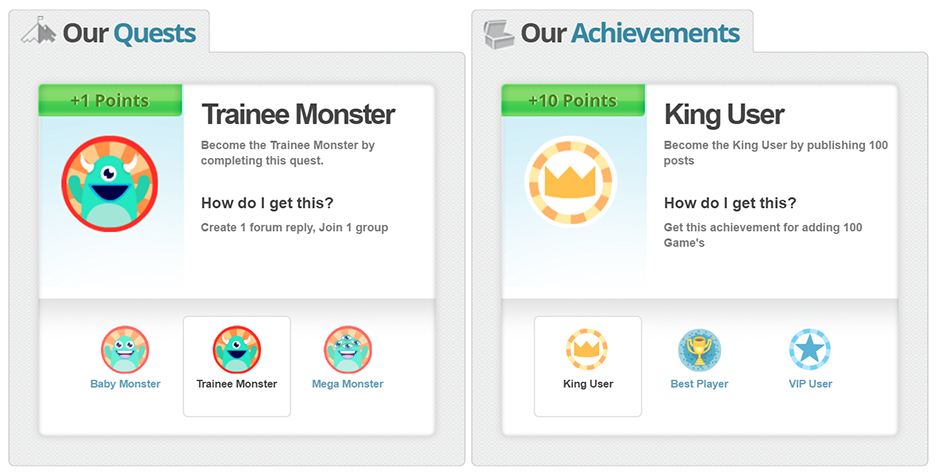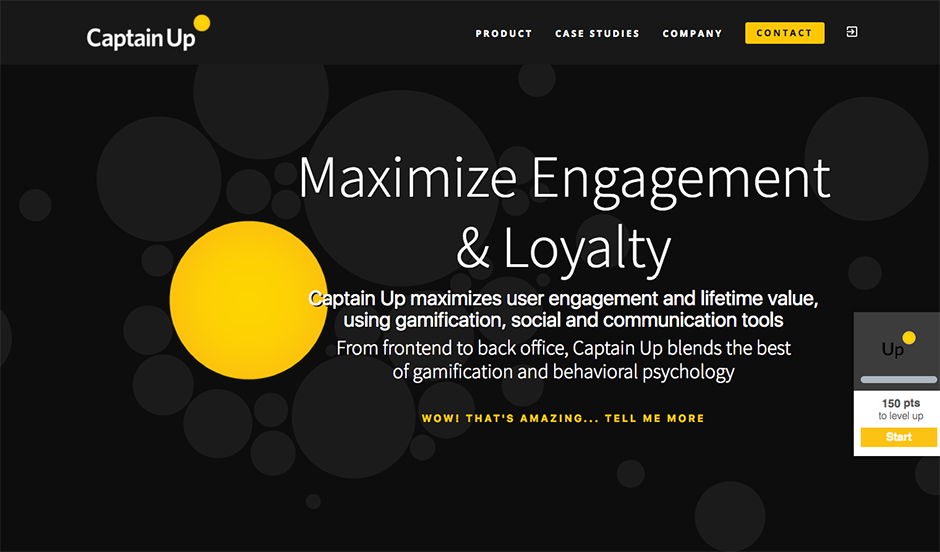Last weekend, I was buying a drink at a busy bar when I noticed the guy standing next to me was playing Candy Crush on his phone. He must have been in his 30s and certainly wasn’t hiding the fact he was crushing it (pardon the pun).
He’s not alone in his love of games. In fact, 59% of Americans play video games and, contrary to stereotypes, 48% of gamers are women.
But this isn’t an article about games. It’s about gamification, aka applying the design techniques that make games so powerfully engaging in non-game contexts like online learning.
By adding elements like badges, points, levels and progress bars into online courses, you can recreate the fun of a gaming experience – and boost engagement and retention.
Here are a few statistics from a TalentLMS survey that show just how important gamification has become to online learning:
- 79% of learners say that they would be more productive if their university/institution or work was more game-like
- 62% of learners say they would be motivated by leaderboards and increased competition between students
- 89% of learners say that a point system would increase their engagement with an online learning application
So how do you harness the power of gamification for your own online courses? In this article, we’ll explore the neuroscience behind gamification, how to apply gamification techniques to your online courses, and briefly touch on some tools to gamify your website.
What is Gamification?
There’s one point worth clearing up from the outset: gamification doesn’t necessarily mean playing games.
Gamification is a broader concept that’s about content engagement. Here is Wikipedia’s definition to help clarify:
“Gamification techniques strive to leverage people’s natural desires for socializing, learning, mastery, competition, achievement, status, self-expression, altruism, or closure.”
The term “gamification” was originally coined by computer programmer and inventor Nick Pelling in 2002. But it wasn’t until 2010 when the term really caught on. It started gaining traction after Gartner predicted that more and more companies would start gamifying processes to better appeal to consumers and increase customer retention.
In fact, according to MarketsandMarkets, the global gamification market is expected to grow from $1.65 billion in 2015 to $11.10 billion by 2020.
One of my favorite examples of gamification is Duolingo. The free language learning app is fun and addictive, with gamification an integral part of every lesson. Languages, such as Spanish and French, are split into bite-sized skills that feel like games.
The app incorporates multiple choice challenges, motivational streaks, in-lesson grading, and hearts that you can lose if you answer a question incorrectly. It’s super successful with more than 200 million users around the world.

The Duolingo app uses gamification to help users quickly learn languages.
Why Gamification Works (TL;DR: Your Brain Craves It)
It’s the brain’s feel-good drug dopamine that makes gamification so damn powerful.
Dopamine is a neurotransmitter that helps control the brain’s reward and pleasure centers. It also helps regulate movement and emotional responses, and enables you not only to see rewards but to take action to move toward them.
Since gamification provides learners with instant feedback and virtual rewards in return for achieving learning goals, your brain starts to associate learning with positive emotions. This makes you want to learn more – and get another hit of dopamine. Suffice to say, this reward pathway plan an integral role in how you learn through positive reinforcement.
There’s more to the neuroscience behind why gamification works so well.
The brain processes stories better than facts. Try recalling a string of disparate facts you learned yesterday compared to a story you read. You get the story, I mean, picture. When you are engaged in a compelling narrative – or engrossed in a course designed around a story – your brain releases oxytocin, a chemical that generates feelings of trust and empathy. The result? Your brain recognizes the course as being more valid.
When you start incorporating elements like badges and rewards, your brain releases serotonin, a hormone that regulates your overall mood. So each time you unlock a new badge or complete a new level of a course you get a serotonin rush whenever you look at rewards you have earned.
And let’s not forget endorphins, the body’s natural painkiller. You know those feelings of excitement while playing a game? They’re the result of endorphins, which can lower stress and anxiety and even create a sense of euphoria.
When you combine all of these hormones and neurotransmitters, they help create an ideal environment for focused learning and higher engagement.
Gamifying Online Courses
Taking an online course can be a lot like venturing downtown for the Black Friday sales. As exciting as it might be at first, it’s often an overwhelming experience and there’s little motivation to finish.
After enrolling in a course, it can be challenging to keep motivated for an extended period of time. Fortunately, gamification provides the small boosts of motivation learners need to stay on track and finish a course.
Here are a few reasons why gamification is so beneficial for online learning.
1. Better learning experience
In many ways, courses can be tough and boring to complete. Working through a course about a topic as brain-numbingly boring as advanced database configuration can be enough to send anyone to sleep (unless you’re really into databases!).
This is why gamification works so well. When applied to courses, it engages and entertains, keepings learners’ attention and helping them to focus on completing the course content so they can get the reward at the end.
Courses that include badges, points and levels also help create a sense of competition, and challenge students to set and reach goals. Better still, if your badges are public-facing, they can construct a community around your courses, encouraging students to compete against each other.
2. Improved recall and retention
Higher engagement with your course content means better recall and information retention for learners.
Let’s go back to the neuroscience of it all:
The hippocampus is an area in the lower section of the brain which is largely responsible for knowledge recall. During learning, a strong hippocampal activation makes the course content easier to remember and recall. Clinical tests have found that gameplay can stimulate these conditions.
On top of this, the brain can only handle a finite amount of information. So if a learner is cognitively overloaded – i.e. information overload – they can miss key information in a course. How can gamification help? By presenting information in a more game-like, challenge-based format that presents learning in smaller bite-sized chunks that are easier to remember.
3. Instant feedback
One of the downsides of online courses is the loss of immediacy – you’re not sitting in a classroom in front of a teacher who can assess right away whether you’re grasping the content.
With gamification, you can include “checkpoints” throughout your course content, such as quizzes, that can help reinforce learning and motivate students to continue on to the next module. This provides students with instant feedback on their understanding of the course material and affirms that they’re doing a great job.
It’s important to keep in mind that shallow gamification that isn’t well-integrated into a course, such as points and levels with no pay-off, is likely to turn-off students and do more harm than good. In good games, points and levels aren’t what really matter – the true prize is the journey. As such, gamification that focuses on progression and provides well-designed information to learners that is fun and entertaining will ensure students remain engaged for the long haul.
4. Behavioral change
While points, badges, levels and leaderboards are fun elements of gamification, there’s more to it than just surface-level benefits. Gamification can drive strong behavioral change, especially when combined with the scientific principles of repeated retrieval and space retention.
Then there’s social sharing and being accountable to friends. While achieving something like completing a module in a challenging course can be hugely motivating, sharing your success with others is even more so. By adding a social sharing component to your courses, learners can celebrate their successes as they work through your content, keeping them accountable and excited to share more.
Simply adding “share” buttons on the module and course completion pages of your website allows learners to quickly share their success with friends. Plus, for you, there’s the added word-of-mouth advertising that this generates, encouraging others to check out your courses and enroll.
Tools for Gamifying Your Site
Keeping the considerations we’ve explored in this post in mind, the next step is gamifying your site and adding all the fun elements that make games so fun and addictive.
While many online learning platforms offer gamification as a standard practice now, with WordPress there are plenty of fantastic tools that can help you gamify different elements of your courses. We’ve covered these tools on the blog previously, but let’s recap as they can be applied in a variety of contexts.
BadgeOS

BadgeOS provides engaging gamification features that you can add to any WordPress site.
This powerful free plugin that lets you easily create achievements and award shareable badges to learners in your courses. You can customize how you use the plugin to suit your online courses, and encourage students to work through levels, achieve badges, and share their success with their friends. There are some great features for developers, such as shortcodes and add-ons, but it’s also fairly easy to setup for non-developers.
WPAchievements

A look at the WPAchievements user interface.
WPAchievements is a similar solution that you can add to a new or existing WordPress site. It works by providing an interface where you can set up achievements for your students, assign badges and even create your own. There’s a content lock feature that allows you to lock certain course content so students have to reach a required level to gain access. For site admins, there are lots of customizations so you can tweak the gamified elements of your site to suit your courses.
Captain Up

When you’re ready to get serious, Captain Up provides serious gamification for any website.
This solution is a fully fledged gamification platform that you can integrate with your site and provide all kinds of fun interactive elements for your students, including levels, trophies, points, and even virtual currency. It also has features for displaying leaderboards and viewing real-time students data with analytics. There’s social integration so you can encourage students to stay accountable by sharing their progress with friends and family.
Conclusion
Gamification works because as humans we are hard-wired for it. Game design techniques can activate our innate need to solve puzzles and conquer challenges. It’s motivation through rewards: earn points, reach the top of the leaderboard, win badges, rinse and repeat.
While this all might seem easy, it’s important to understand your students and target demographic when implementing any gamified elements to your courses. As such, the best approach is to introduce elements as needed rather than overwhelm students with lots of flashing lights, so to speak.
Also, it’s important to always A/B what you’re doing and survey students for their feedback so you can continually improve on your efforts, and ensure students remain motivated and engaged to complete your courses and keep coming back for more.
Read other posts about:
Leave a Reply
Discover your innate talents and embrace them as the foundation to personal and business success. Walk away with personalized tips to help you overcome the mental hurdles unique to your brand builder personality.
What’s your brand builder personality?
Take the quiz
Leave one here
Comments